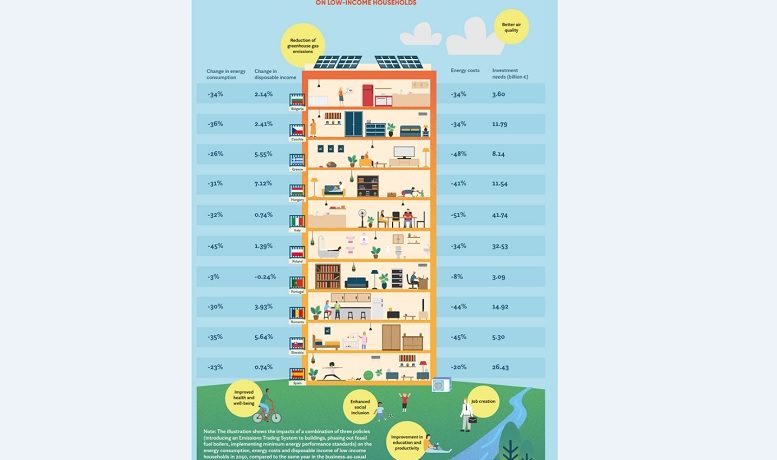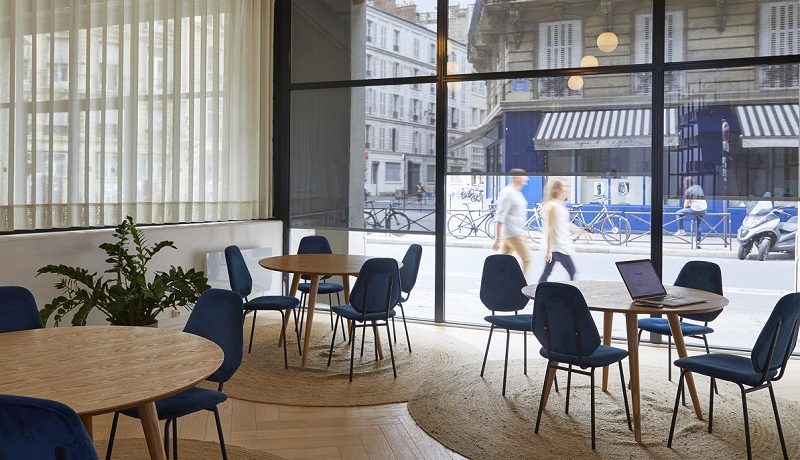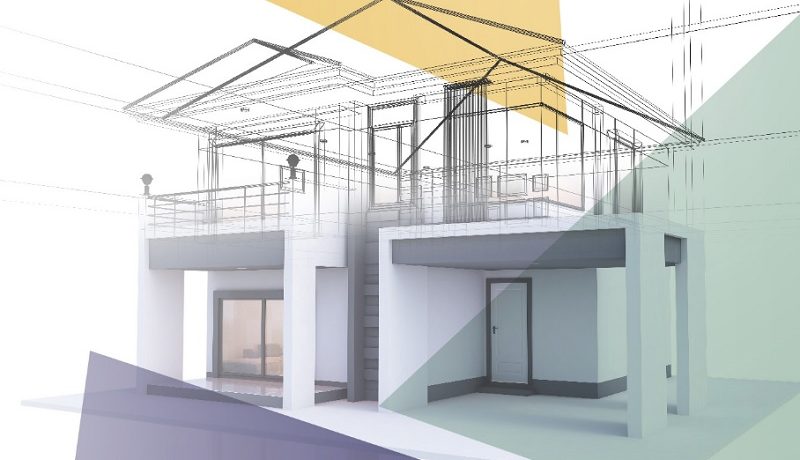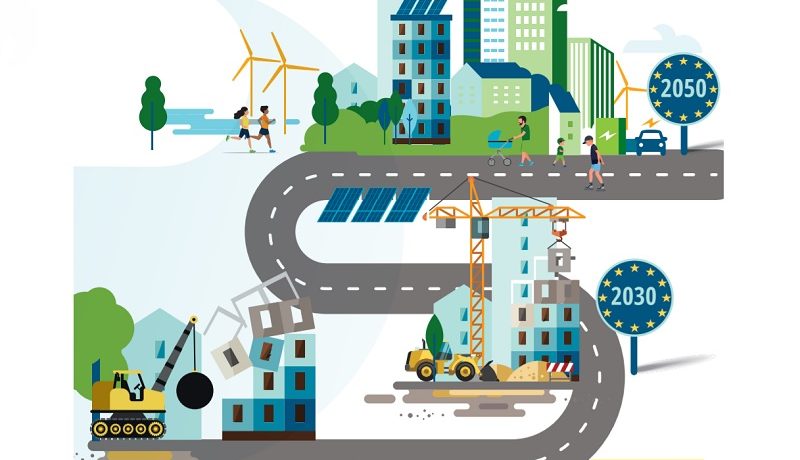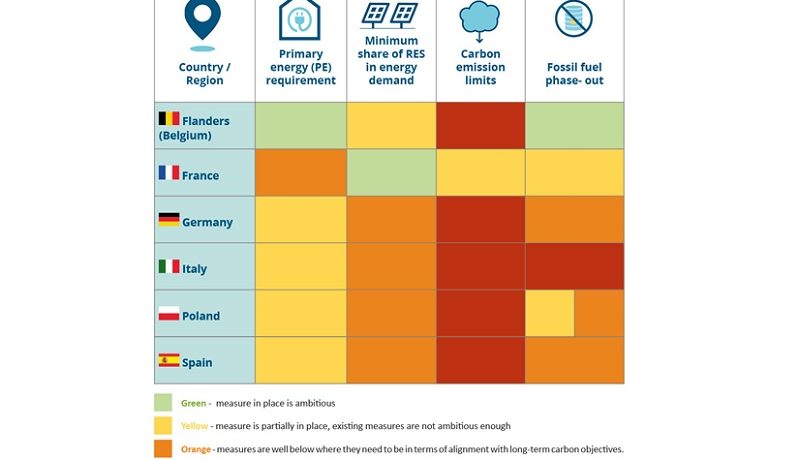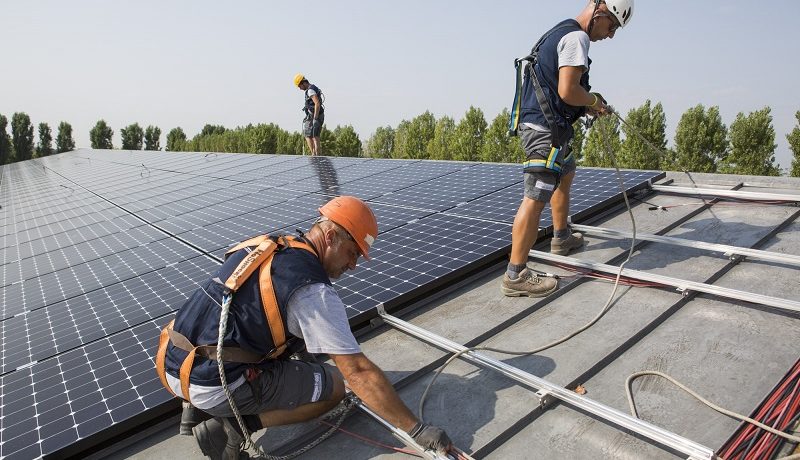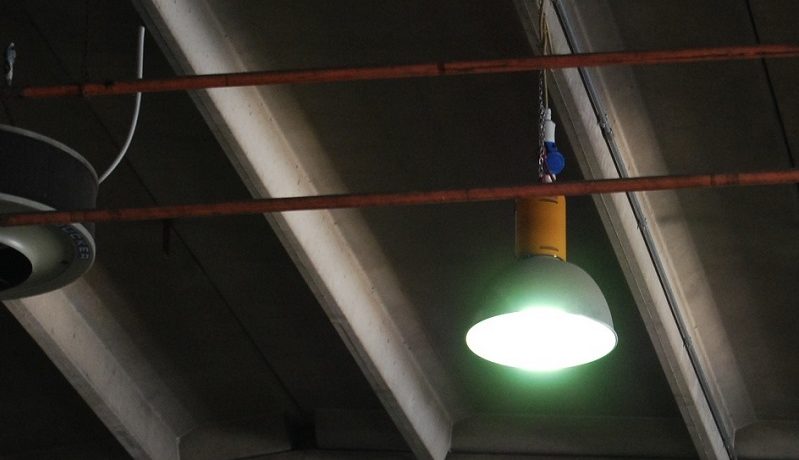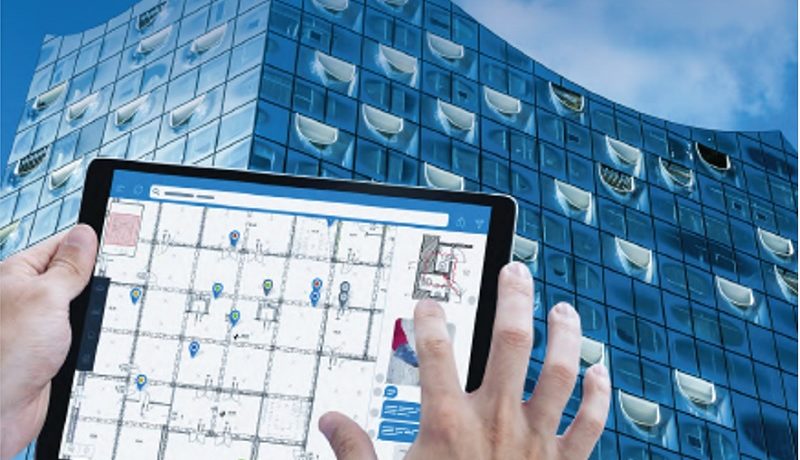Category: Real Estate – City
To decarbonise homes: EU policies will benefit low-income households across Europe. European Green Deal policies to increase energy renovations and the uptake of clean heating in homes, combined with a smart recycling of carbon pricing revenues, would reduce energy cost and increase the disposable income of low-income households, a new study finds.
The study, by the Institute for European Energy and Climate Policy (IEECP) and commissioned by the European Climate Foundation (ECF), analysed the impacts of EU measures to reduce greenhouse gas emissions from buildings on energy poverty in 10 Central, Eastern and Southern EU countries. It found that the EU Green Deal could deliver a fairer society by giving energy poor households the opportunity to live in energy efficient homes and access to clean and affordable heating. The ten countries covered by the analysis are: Bulgaria, Czechia, Greece, Hungary, Italy, Poland, Portugal, Romania, Slovakia and Spain.
“Our research documents that, if well-designed, the EU Renovation Wave, which is part of the EU Green Deal, can cut low-income households’ energy costs by a third. Introducing three policies simultaneously – minimum energy performance standards for buildings, a phase out on the sale of fossil fuel boilers and a carbon price for heating fuels – would result in the lowest energy costs and the highest disposable incomes in 2050 compared to implementing only one or two of the policies. To ensure low-income households reap the benefits described, substantial public funding is needed,” says Vlasis Oikonomou, IEECP’s Managing Director.
Data from the Energy Poverty Advisory Hub indicate that the number of energy-poor citizens in the EU is between 50 and 125 million people. These Europeans are unable to keep their homes adequately warm and this number is highly likely to rise given the outlook on energy prices.
The EU is increasingly targeting energy poverty in its policy action with a set of building legislation measures, notably the EU Renovation Wave, aiming for a massive renovation of buildings and eradicating energy poverty in the coming decade.
In the five scenarios modelled, IEECP finds that minimum energy performance standards to upgrade buildings to energy label E by 2033 and then to label D by 2040 could make low-income households’ energy bills on average 19% lower in 2050 across the ten countries analysed compared to when no additional policies are implemented1. Such standards would also improve their thermal comfort and health as lower income households tend to live in inefficient homes.
If the standards are introduced in combination with a phase-out of fossil fuel boilers, energy costs will be 30% lower on average compared to business-as-usual in 2050.
If no additional policies are implemented to decarbonise Europe’s buildings, the EU will fail to reach its climate targets and low-income households in the ten countries will be spending on average 19% more on energy than they do now while being left out of the energy transition.
“The study released today is the first of its kind to specifically map the impacts of EU building policies on the lowest income quintile groups at national level, providing clear policy recommendations to address potential adverse effects”, adds Oikonomou.
(1) It should be noted that the study was conservative on the perspective of price rise for both energy and ETS CO2 prices, the expected impacts can then be higher.
IEECP is a non-for-profit, independent research foundation working, since 2015, on science-based climate change mitigation, energy efficiency and renewable energy policy, with an international interdisciplinary team of experts generating and disseminating scientific knowledge.
We work closely with EU institutions, international organisations, national, regional and local governments, think-tanks, NGOs, academics and the business world to lead the transition to climate neutrality and to a sustainable energy future for various sectors. We build valued partnerships with renowned organisations from across Europe as we believe collaboration and creating a community helps carrying our ideas and results further, to shape, together, a low-emissions, resilient future. www.ieecp.org
IEECP’s report series “Study on the impacts of policies to decarbonise residential buildings on energy poverty in Central, Eastern and Southern Europe and mitigation strategies” and summary report “A socially-just EU Renovation Wave”
Architects Against Housing Alienation (AAHA) rappresenterà il Canada alla 18a Mostra Internazionale di Architettura, La Biennale di Venezia, dal 20 maggio al 26 novembre 2023 con il progetto Not for Sale! (non in vendita!).
Per l’occasione Architects Against Housing Alienation (AAHA) trasformeranno il Padiglione Canada ai Giardini nel quartier generale di una campagna attivista per l’edilizia abitativa non alienata, contro il concetto di proprietà e la conseguente forma di architettura come strumento finanziario.
Insieme a AAHA collaboreranno team interdisciplinari e geograficamente distribuiti, formati da organizzazioni di attivisti, sostenitori della non alienazione e architetti: insieme per formulare richieste e creare visioni di audaci progetti architettonici che possano ispirare tutti, canadesi e non solo, a unirsi alla richiesta di alloggi più sicuri, più sani e più equi.
Nello spiegare il progetto che porterà alla Biennale Architettura 2023, AAHA sottolinea come la realtà contemporanea sia plasmata dalla logica estrattiva della speculazione immobiliare, fondata sull’espropriazione coloniale delle terre indigene e sull’invenzione moderna della proprietà fee-simple (a pagamento), ovvero la forma assoluta e irrevocabile di proprietà. La speculazione immobiliare è quindi una forma di estorsione: trasforma le case in beni spazio-finanziari modificando la forma, la funzione e l’estetica delle abitazioni per servire meglio le logiche di accumulo e speculazione della ricchezza. Questo processo violento si traduce in un ambiente urbano sistematicamente razzista, sessista e classista. Un fenomeno globale molto visibile in Canada, un paese la cui economia è ora dominata dal settore immobiliare.
Selezionata e commissionata dal Canada Council for the Arts/Conseil des arts du Canada, “la campagna “Not for Sale!” è unica e tempestiva. Un progetto che risuonerà a livello internazionale poiché il Canada, come gran parte del mondo, deve affrontare sfide complesse e diffuse in termini di accessibilità e disponibilità degli alloggi. Siamo orgogliosi di permettere alle grandi idee artistiche che influenzano il cambiamento sociale di raggiungere un nuovo pubblico”.
Architects Against Housing Alienation (AAHA), il collettivo di curatori formato per la Biennale di Architettura di Venezia 2023, è composto da:
Adrian Blackwell, artista, designer, teorico ed educatore, il cui lavoro esplora la relazione tra spazi fisici e forze politiche e economiche. La sua arte e il suo design sono stati esposti in tutto il Canada, negli Stati Uniti e a livello internazionale alle Biennali di Shenzhen e Chengdu, alla Shanghai Urban Space Art Season, alla Chicago Architecture Biennial e alla Toronto Biennial of Art. Nel 2022 Adrian e David Fortin hanno co-curato il numero 12/13 della rivista Scapegoat– c\a\n\a\d\a: delineating nation state capitalism. Blackwell ha insegnato architettura e urbanistica nelle università di Chongqing, Michigan, Toronto e Harvard ed è attualmente Professore Associato presso la University of Waterloo School of Architecture.
David Fortin è un Métis of Ontario e membro della Indigenous Task Force del Royal Architectural Institute of Canada (RAIC), un’istituzione che cerca “modi per favorire e promuovere il design indigeno in Canada”. Dal 2018 al 2019 ha coordinato un progetto di design abitativo guidato dalla comunità con il National Research Council per le comunità remote settentrionali e ha partecipato come mentore e architetto per l’Indigenous Homes Innovation Initiative amministrata da Indigenous Services Canada. David è un architetto professionista che gestisce uno studio di architettura, lavorando principalmente con le comunità Métis e First Nations di tutto il Canada. Attualmente è professore presso la University of Waterloo School of Architecture.
Matthew Soules è Professore Associato presso la University of British Columbia School of Architecture and Landscape Architecture e fondatore di Matthew Soules Architecture. La ricerca di Matthew si concentra sul capitalismo e l’architettura contemporanei. Il suo ultimo libro, Icebergs, Zombies, and the Ultra Thin: Architecture and Capitalism in the Twenty-First Century, esamina l’ascesa del capitalismo finanziario e il suo rapporto con l’architettura. Il lavoro di Matthew è stato finanziato da numerose organizzazioni, tra cui il Social Sciences and Humanities Research Council e il British Columbia Arts Council, oltre a ricevere una vasta gamma di premi, come l’AIA/ACSA Housing Design Education Award nel 2012. È stato Professore invitato presso l’Università di Harvard e SCI-Arc.
Sara Stevens è una storica dell’architettura e dell’urbanistica. È Professoressa Associata presso la University of British Columbia School of Architecture and Landscape Architecture. La sua ricerca si concentra sui costruttori del ventesimo secolo, esplorando l’economia culturale della pratica architettonica, della finanza e delle competenze settoriali in Canada e negli Stati Uniti. Il suo libro, Developing Expertise: Architecture and Real Estate in Metropolitan, studia lo sviluppo immobiliare nelle città americane del ventesimo secolo e come costruttori, investitori e architetti hanno lavorato insieme per costruire suddivisioni e superblocchi, vicoli ciechi e torri. Nel 2019 Sara ha ricevuto una borsa di studio di ricerca presso il Canadian Center for Architecture, sostenitore del suo secondo progetto di libro, intitolato Building Capital.
Patrick Stewart è un membro della Killerwhale House di Daaxan della Nisga’a Nation. È un architetto pluripremiato con 26 anni di esperienza in architettura. Patrick è stato il primo architetto di discendenza delle Prime Nazioni a possedere e gestire uno studio di architettura nella Columbia Britannica ed è stato eletto Presidente dell’Architectural Institute of British Columbia. Patrick è Presidente fondatore della Task Force indigena del Royal Architectural Institute of Canada RAIC, co-Presidente della RAIC Truth and Reconciliation Task Force e Presidente del Comitato provinciale per i senzatetto aborigeni in BC. È stato anche mentore per l’Indigenous Homes Innovation Initiative, amministrata da Indigenous Services Canada, come un modo diverso di sviluppare, progettare e finanziare progetti con le comunità indigene.
Tijana Vujosevic è Assistente Professoressa presso la University of British Columbia School of Architecture and Landscape Architecture. Tijana ha ricevuto numerose borse di studio e premi, tra cui la MIT Presidential Fellowship, la Gerda Henkel Foundation PhD Fellowship, la American Association of University Women International Fellowship e una borsa di studio biennale con l’Institute of Advanced Studies dell’Università di Strasburgo. Di recente, il Museum of Modern Art di New York (MoMA) ha ripubblicato il suo saggio del 2013 sugli stabilimenti balneari sovietici degli anni ’30, come lettura essenziale durante la pandemia. Il libro di Tijana sulla domesticità comunista è stato recensito in nove riviste accademiche ed era nell’elenco di Owen Hatherley dei libri più importanti del 2017 nell’Architectural Review.
Chris Lee è un graphic designer e Assistente Professore presso il Dipartimento di Design della comunicazione universitaria del Pratt Institute (Brooklyn, NY). La sua ricerca e il suo lavoro creativo indipendente esplorano le implicazioni storiche, pratiche e pedagogiche del documento, in particolare la sua funzione archivistica e probatoria, come genere di progettazione grafica. Ha lavorato per The Walrus Magazine, Metahaven e Bruce Mau Design.
Ali S. Qadeer è un designer di Toronto, educatore presso l’Ontario College of Art & Design University (OCADU), scrittore occasionale e laureato alla McGill University e alla Rhode Island School of Design (RISD). Il suo lavoro e la sua scrittura si concentrano sulla creazione di forme algoritmiche, sulla creazione di strumenti non ortodossi e sulle strutture disciplinari ed economiche che progettano le pratiche contrafforti, nonché sulla sorveglianza e sul managerialismo della piattaforma e sulle controculture del cooperativismo.
Contributori e collaboratori: Affordable Housing Association of Nova Scotia ¦ Shawn Bailey and Lancelot Coar, University of Manitoba ¦ Bâtir Son Quartier, Black Urbanism Toronto ¦ Black Urbanism TO | Brique par Brique | Ian Campbell, Hereditary Chief, Squamish Nation ¦Canadian Cohousing Network ¦ Julia Christensen, Memorial University ¦ Anne Cormier, Atelier Big City ¦ CP Planning | Susan Fitzgerald, fbm Architecture ¦ Gentrification Tax Action | Haeccity Architecture Studio ¦Idle No More | One House Many Nations ¦LGA Architectural Partners ¦ L’OEUF Architectes | Parkdale Neighbourhood Land Trust ¦ Right to Remain ¦ Sarah Silva, Hiy?ám? ta Housing ¦ SvN Architects and Partners ¦ The Studio of Contemporary Architecture ¦ Toronto Tiny Shelters ¦ Ipek Türeli, McGill University.
Organizzazione principale: School of Architecture and Landscape Architecture, University of British Columbia
Organizzazione partner: University of Waterloo School of Architecture
Il Curatore, il Canada Council for the Arts-Conseil des Arts du Canada
Il Canada Council for the Arts/ Conseil des Arts du Canada è il finanziatore pubblico delle arti in Canada, con il mandato di promuovere e facilitare lo studio e la diffusione delle arti, così come la produzione di opere d’arte. Il Consiglio sostiene e investe nell’eccellenza artistica attraverso un’ampia gamma di sovvenzioni, servizi, premi e sponsorizzazioni per artisti professionisti e organizzazioni artistiche canadesi. Il suo lavoro garantisce la diffusione di opere d’arte e letterarie vivaci, diverse e di alta qualità che coinvolgono i Canadesi, arricchiscono le comunità e raggiungono i mercati globali. Infine, attraverso le sue attività di comunicazione, ricerca e promozione, il Consiglio svolge attività di sensibilizzazione e valorizzazione delle arti.
Il Canada Council sostiene con orgoglio da diversi anni la rappresentanza del Canada alla Biennale di Architettura di Venezia e ha recentemente raddoppiato il suo investimento, che ora è di 500.000 dollari. Questo aumento fa parte dell’impegno strategico per aumentare il profilo internazionale dell’arte e degli artisti canadesi.
Schermo solare riduce consumi energetici. L’uso delle protezioni solari potrebbe ridurre il consumo di energia per il raffreddamento degli spazi negli edifici europei fino al 60% entro il 2050.
Costituiscono infatti una prima efficace soluzione nella lotta contro il surriscaldamento degli edifici e consentirebbero di evitare 100 milioni di tonnellate di emissioni di CO2 e, al tempo stesso, un risparmio di 285 miliardi di euro.
È quanto è emerso da un nuovo studio scientifico condotto da Guidehouse, sul quale è intervenuta anche ES-SO, European Solar Shading Organisation – l’organizzazione ombrello per l’industria europea delle schermature solari di cui fa parte anche Dickson-Constant, affermando che la ricerca dimostra che c’è un urgente bisogno di schermature solari automatizzate per rendere gli edifici più efficienti dal punto di vista energetico.
ES-SO chiede che l’obbligo di utilizzo delle schermature solari automatizzate venga emanato dalla Direttiva europea sulla prestazione energetica degli edifici (EPBD).
Dickson SWK6
Nel panorama delle schermature solari, il tessuto SWK6 di Dickson rappresenta una soluzione particolarmente efficiente e sostenibile per gli edifici pubblici e residenziali.
È infatti un vero condizionatore naturale perché, come tenda verticale, offre elevato comfort termico: in estate respinge il 94% del calore, riducendo così le spese relative alla climatizzazione e contribuendo a migliorare il bilancio energetico dell’edificio.
Inoltre, con un’apertura del 6% SWK6 lascia entrare la luce naturale nell’edificio controllando la luminosità e offre sia un eccellente contatto visivo con l’esterno sia un’ottima privacy all’interno. La sua microperforazione e la grana regolare garantiscono un buon filtraggio della luce, consentendo una riduzione del 30% dell’utilizzo dell’illuminazione artificiale.
Può essere utilizzato sia all’interno sia all’esterno ed è progettato per resistere alle intemperie perché, grazie alla sua costruzione in Rachel Trameur, SWK6 non teme lo strappo e sebbene sia il tessuto per schermi più sottile e leggero sul mercato, la sua resistenza è 5 volte maggiore della fibra di vetro. Inoltre, il suo esclusivo processo di spalmatura protegge i suoi colori dai raggi UV e dalle intemperie garantendo allo stesso tempo un’eccellente durata nel tempo.
I tessuti microforati SWK6 di Dickson sono utilizzabili anche come tessuti per pareti e soffitti tesi o persino come pannelli acustici; sono disponibili in 21 colori coordinabili con gli altri tessuti della gamma Sunworker e in due larghezze, 150 cm e 300 cm, e le sue prestazioni tecniche ed estetiche lo rendono adattabile a tutti gli spazi e a tutte le architetture.
La ricerca di Guidehouse: schermature solari vs aria condizionata
Il cambiamento climatico comporta ondate di calore più intense e durature e si stima che gli edifici che richiedono aria condizionata aumenteranno del 60%. Nel suo studio, Guidehouse, che agisce come consulente per i mercati pubblici e commerciali di tutto il mondo, ha analizzato l’impatto delle schermature solari rispetto all’utilizzo dell’aria condizionata negli edifici.
Le simulazioni e i vari scenari sono abbastanza definiti: se le schermature solari intelligenti venissero applicate prima del raffreddamento attivo (scenario preferito), dovremmo essere in grado di fermare la crescita degli edifici che richiedono aria condizionata da qui al 2050.
I risultati della ricerca condotta da Guidehouse mostrano che le schermature solari automatizzate hanno un impatto decisamente positivo e questo non solo sul pianeta, ma anche sulla società e sulle persone.
Il pianeta: una strategia di riduzione della CO2
Nello scenario auspicato dallo studio Guidehouse, da qui al 2050 possono essere evitate circa 100 milioni di tonnellate di emissioni di gas serra (I fattori di CO2 sono in linea con l’EPBD Impact Assesment del 2021 e sono basati sul Climate Target Plan 2030 della Commissione Europea).
Questa riduzione di 100 milioni di tonnellate di emissioni di CO2 è equivalente alle emissioni annuali di CO2 di 22 milioni di automobili.
Società: una strategia che si basa sul risparmio energetico
Le schermature solari possono ridurre del 60% l’energia utilizzata per il raffreddamento degli edifici dell’UE. Secondo lo studio, questo risparmio energetico (di circa 870 Terawattora di elettricità) è approssimativamente equivalente al consumo finale di energia della Spagna, che ha 47 milioni di abitanti.
Le persone: una strategia efficace dal punto di vista dei costi
Dalla ricerca emerge che le schermature solari sono un investimento molto più conveniente rispetto al raffreddamento attivo degli spazi, come l’aria condizionata, dato che questa soluzione potrebbe far risparmiare fino a 285 miliardi di euro da qui al 2050. Questa somma è simile al PIL di Paesi come la Finlandia e il Lussemburgo insieme.
Combattere il surriscaldamento degli edifici. L’impegno di ES-SO
Poiché secondo lo studio svolto da Guidehouse le schermature solari automatizzate sono quindi la migliore difesa contro il cambiamento climatico, ES-SO sta esortando i responsabili politici dell’UE a rendere le schermature solari obbligatorie ai sensi della direttiva EPBD, come prima soluzione nella lotta contro il surriscaldamento, prima dell’utilizzo del raffreddamento attivo come l’aria condizionata.
Anders Hall, Presidente di ES-SO: “Al giorno d’oggi, gli edifici sono i maggiori consumatori di energia in Europa. Consumano il 40% della nostra energia e sono responsabili del 36% delle emissioni di gas serra. I risultati della ricerca condotta da Guidehouse sono decisamente impressionanti e dimostrano un potenziale risparmio energetico fino al 60% sul raffreddamento interno degli edifici entro il 2050. Questo studio dimostra che non ci devono essere ulteriori ritardi e che le schermature solari devono essere visti come la prima soluzione per combattere il surriscaldamento degli edifici. Siamo in attesa di un futuro in cui gli edifici dovranno essere più resistenti al clima e meno dipendenti dall’energia”.
ES-SO è un’organizzazione no profit fondata a Bruxelles. Mira a promuovere l’impatto positivo delle schermature solari sulla gestione del clima interno degli edifici, sostenendo in tal modo gli ambiziosi impegni di efficienza energetica dell’UE. ES-SO funge da organizzazione ombrello per le associazioni professionali di schermature solari presenti nella maggior parte dei paesi membri dell’UE, tra cui Dickson-Constant. L’industria europea delle schermature solari impiega oltre 400.000 persone nei 27 Stati membri e genera un fatturato annuo di oltre 22 miliardi di euro. Con sede a Bruxelles, ES-SO è stata creata per garantire che la voce del settore venga ascoltata al fine di dare un contributo positivo agli obiettivi energetici dell’UE. ES SO è inoltre coinvolta in vari progetti dell’UE e agisce sia a titolo contributivo che di consulenza.
DICKSON è una azienda di punta nel settore dei tessuti tecnici, Dickson è oggi riconosciuto in tutto il mondo come leader nei tessuti per interni e per esterni fabbricati in Francia. Venduto con due marchi di punta – DICKSON® e SUNBRELLA® – i suoi prodotti sono richiesti da nomi di spicco del design, dell’architettura e della nautica.
Guidando la crescita del gruppo, l’innovazione consente a Dickson di diversificare le sue linee di prodotti offrendo un’ampia selezione di tessuti tecnici e di design per soddisfare le esigenze di miglioramento della casa. La sua attività copre ora quattro mercati: protezione solare, tessuti per indoor & outdoor, tessuti per la nautica e pavimentazione in tessuto.
Combinando tecnologia avanzata e originalità, lo stile Dickson è ora disponibile in oltre 110 Paesi in cinque continenti.
Nel 2019, Dickson-Constant è diventata una delle prime aziende tessili certificate ISO 45001 sui requisiti di salute e sicurezza sul lavoro.
Evaluation energy efficiency. New tool facilitates evaluation of energy efficiency investment and uptake of on-bill schemes to help the EU reach its decarbonization goals
On-bill schemes are important tools for lifting some important existing barriers to energy efficient renovation investments and have already gained the attention of EU policymakers who have included them in building renovation-related legislative files. The newly released RenOnBill tool aims to derisk energy efficiency investments by better evaluating interventions. However, more policy efforts are needed to secure and maximise the uptake of on-bill schemes in the EU and thus fulfil the European commitment to fight climate change and implement stronger climate policy actions.
In order to achieve the European Commission’s long-term energy vision for 2050, it is necessary to dramatically increase the yearly buildings renovation rate, i.e. from the current 1% (roughly, depending on the country) to at least 2.3%. The evaluation of energy efficiency interventions, however, is affected by numerous parameters and variables and most of them are uncertain. In addition, most of the analyses do not include the estimation of the risk connected with the energy efficiency investments. This approach has led to perceiving energy investments by financial institutions as high-risk and thus limited their commitment. Given these issues, new and innovative ways of financing retrofits are vital.
The new RenOnBill tool, released on April 5 during the H2020 project’s final conference that saw the participation of multiple experts at EU and Member States level, tackles these issues by providing a simple and effective instrument directed mainly to both financial institutions and energy utilities tp structure the residential sector’s energy renovation demand, assess risks and investments and facilitate the implementation of on-bill schemes.
“On-bill schemes are important tools for involving the private sector in financing and implementing energy renovation of residential buildings and thus resolving some important existing barriers to energy efficiency investments.” says Vincenzo Bianco, Professor at University of Genova, the RenOnBill partner who developed the tool. “By providing the investors with a detailed amount of information for the development of sophisticated investment strategies and design of on-bill programs, the tool has the potential to facilitate large investments in energy efficiency interventions and thus upscaling the renovation rate that can thus help the EU reach its decarbonization goals.”
Due to the different benefits they can provide, on-bill schemes have already gained the attention of EU policymakers who have included them in building renovation-related legislative files, such as the Energy Performance of Buildings Directive (EPBD) recast proposal from December 2021. However, more policy efforts are needed to secure and maximise the uptake of on-bill schemes in the EU. This is extremely important given the EU commitment to fighting climate change and related climate policy actions such as the adoption of the European Green Deal and a constant pursuit of reduced greenhouse gas emissions and increased energy efficiency.
On-bill schemes use the utility bill as a repayment vehicle and bring different actors into a building renovation project. On-bill scheme (OBS) refers to a method for financing energy renovations by using the utility bill as a repayment vehicle. On-bill schemes bring the upfront costs of energy efficiency upgrades down to zero by adding a periodical line item to a customer’s utility bill, which represents an advantage for end-users willing to renovate their houses. Certain features of on-bill schemes that are not easily found in other financing instruments can help strike a balance between the interests of different renovation participants and resolve barriers to energy renovation.
In 2021, RenOnBill was awarded the prestigious Citizens’ Award at the EU Sustainable Energy Awards.
Partners of RenOnBill: adelphi (Germany), Bluenergy (Italy), BPIE – Buildings Performance Institute Europe (Belgium), Creara (Spain), Epta Prime (Italy), Fenie Energia (Spain), Kauno Energija (Lithuania), LEI – Lietuvos energetikos institutas (Lithuania), UNIGE – Universitá degli studi di Genova (Italy).
RenOnBill stands for Residential Building Energy Renovations with On-Bill Schemes and aims to scale up investments towards deep energy renovations of residential buildings by promoting the development and implementation of on-bill schemes, based on the cooperation between energy utilities and financial institutions
This project has received funding from the European Union’s Horizon 2020 research and innovation programme under grant agreement No #847056.
– BYinnovation is Media Partner of BPIE
Roadmap climate-proof buildings and construction EPBD (Energy Performance of Buildings Directive) should set requirements to reduce whole-life carbon emissions of EU building stock, says BPIE
Carbon emissions across the whole lifecycle of buildings must be immediately reduced if we are to meet Europe’s climate targets for 2030.
A new policy roadmap from BPIE argues that the EPBD (Energy Performance of Buildings Directive) recast should ensure a comprehensive vision of a carbon neutral building and construction sector which takes into account whole lifecycle carbon emissions of a building.
Despite an array of national initiatives, voluntary schemes and regulations, EU legislation is not designed to address all sources of carbon emissions from buildings and construction. Most existing policies focus on curtailing carbon emissions by managing and reducing operational emissions (energy consumption in buildings’ use phase), leaving out the significant mitigation potential of embodied emissions (those resulting from the production, installation, maintenance and disposal of building materials). Embodied emissions in buildings need to be tackled in order for them not to undermine the carbon reductions achieved from the energy saving measures in the building sector.
BPIE’s roadmap argues that the 2022 recast of the EPBD (Energy Performance of Buildings Directive) is an essential opportunity to set the requirements and clear triggers to reduce whole-life carbon emissions of the building stock.
“The EPBD is the single most important legislation targeting buildings and should reinforce the urgency to set the buildings and construction sector on the path to net zero carbon by 2050,” says BPIE Executive Director Oliver Rapf. “The current reference to a highly efficient and decarbonised building stock should be complemented by the necessity to reduce carbon across a building’s entire life cycle.”
While it is important to improve the energy efficiency of buildings, the measures risk being suboptimal without a clear understanding of the embodied carbon footprint of buildings. A first step to regulate whole life carbon is to measure it.
Additionally, it is necessary to set voluntary targets based on common standards, agreed methodologies and consistent carbon data sources. New construction should be required to assess and disclose information on embodied carbon emissions.
Making whole-life carbon reporting mandatory will facilitate data collection and benchmarking and will allow the construction sector to develop the necessary skills and capacity. Mandatory minimum whole-life carbon standards will have to be introduced and strengthened over time.
However, BPIE cautions that a lack of synchronisation in the EU policy timeline runs the risk that policies addressing and affecting the different stages of the construction value chain will not be coordinated.
The EPBD recast, for example, takes place before carbon benchmarks and before an EU-wide whole-life carbon trajectory will be available to guide how all emissions related to buildings can and should be reduced.
“The EPBD must now, at minimum, set out a strong vision for whole-life cycle carbon of buildings and construction, that ensures a consistent, step-wise approach and timely implementation of the sequences of recommended actions,” stresses Rapf. “Waiting for the 2027 revision will be too late.”
BPIE (Buildings Performance Institute Europe) is a leading independent centre of expertise on energy performance of buildings, providing data-driven and actionable policy analysis, advice, and implementation support to decision-makers in the public, private, and non-profit sectors. Founded in 2010, BPIE combines expertise on energy efficiency, renewable energy technologies, and health and indoor environment with a deep understanding of EU policies and processes.
A not-for-profit think-tank based in Brussels and Berlin, our mission is to make an affordable, climate-neutral built environment a reality in Europe and globally.
– BYinnovation is Media Partner of BPIE
Climate impact of new buildings much too high, finds BPIE analysis. A failure to decarbonise newly constructed buildings could prevent the EU from achieving its climate targets for 2030 and 2050, according to a recent report, Ready for carbon neutral by 2050? Assessing ambition levels in new building standards across the EU, published by BPIE (Buildings Performance Institute Europe).
A close examination of six EU focus geographies shines a spotlight on wide-ranging discrepancies between EU countries’ performance standards for new buildings, both in terms of consistency regarding the definition of Nearly Zero Energy Buildings (‘NZEBs’) as laid out in the Energy Performance of Buildings Directive (EPBD), and in terms of overall ambition levels.
Governments need to align the national building-sector decarbonisation efforts with the EU’s wider climate change mitigation ambition, but the current policy framework does not encourage Member States to move in a consistent and concerted way towards carbon neutrality by 2050. Not one of the focus geographies featured in the report, for example, has a set date by which new construction will meet a net zero energy and carbon level. In fact, the EPBD definition of ‘NZEB’, and therefore the standard applying to new buildings being constructed, has not been changed for more than 10 years.
While the European Commission’s December 15 proposal for a revised EPBD proposes an updated definition, BPIE warns that the current proposal is weak: zero emission building stock is solely defined in terms of operational energy, and the levels of energy performance are not more ambitious than the ones previously recommended by the Commission in 2016 (which they should be).
“There are encouraging changes in the policy landscape, but unless all EU Member States become more ambitious, energy and carbon emissions reductions in the buildings sector are likely to fall short in the quest to meet Europe’s 2050 decarbonisation objectives,” says BPIE Executive Director Oliver Rapf.
Among its policy recommendations, BPIE insists that the revised EPBD should intensify focus on reducing energy demand and implementing the energy efficiency first principle. This would include more ambitious provisions on maximum energy-consumption levels and the use of renewable energy sources, in addition to a fossil-fuel phase-out plan.
Metrics to measure operational and embedded carbon emissions, prior to setting carbon limits should also be included in the EPBD revision. There is also a clear need to integrate metrics to measure operational and embedded carbon emissions, and to set carbon limits, taking in to account the ‘whole life cycle’ perspective.
“Both the European Commission and EU Member States should read this report as a red flag that the energy transition is not on track,” concludes Rapf. “New buildings are creating a carbon legacy which will generate costs for many decades to come. The revision of the EPBD this year is the opportunity to introduce a zero carbon rule for new buildings.”
BPIE (Buildings Performance Institute Europe) is Europe’s leading centre of expertise on decarbonising the built environment, providing independent analysis, knowledge dissemination and evidence-based policy advice and implementation support to decision-makers in the public, private, and non-profit sectors. Founded in 2010, BPIE combines expertise on energy efficiency, renewable energy technologies, and health and indoor environment with a deep understanding of EU policies and processes. A not-for-profit think-tank based in Brussels and Berlin, our mission is to make an affordable, carbon-neutral built environment a reality in Europe and globally.
Fotovoltaico: se non ora, quando? SmartEfficiency da anni progetta ed installa con i propri fornitori impianti fotovoltaici di alta qualità che generano profitto per molte aziende che hanno creduto nella nostra proposta di energia solare ed hanno ridotto drasticamente i costi dell’energia nel ciclo produttivo.
Lampade al mercurio pericolose: i vapori di mercurio “vanno in pensione”. Dopo aver illuminato il lavoro di milioni di lavoratori nei capannoni industriali e di logistica, sono state definitivamente classificate come pericolose a causa della tossicità del mercurio. Sono state già messe in realtà fuori mercato, soppiantate dalle lampade a LED che, a parità di lux erogati, consumano il 70% di energia in meno e non hanno i tempi di attesa di riscaldamento per arrivare a piena luce e durano 10 volte di più, eliminando anche i costi di manutenzione, spesso ad altezze considerevoli.
SmartEfficiency.eu propone soluzioni personalizzate con progetto illuminotecnico per la sostituzione efficiente, di qualità ed economica. Le lampade al mercurio sono classificate dalla Direttiva ROHS (Restriction of Hazardous Substances)
per informazioni
02. 2641 7228
info@SmartEfficiency.eu
Mercury Lights out in the EU
The EEB and CLASP applaud the European Commission for adopting proposals that will phase-out all general purpose compact and linear fluorescent lamps (CFL and LFL) containing mercury in the coming two years.
Currently, the EU regulates mercury in light bulbs through the Restriction of Hazardous Substances (RoHS) Directive, by allowing mercury use in lighting via an exemption list. CFLs and LFLs have been tolerated so far because of the once limited availability of mercury-free alternatives.
For years the EEB, CLASP, Member States and experts have tirelessly campaigned to end mercury lamps as there are more efficient, mercury free Light Emitting Diodes (LEDs) widely available on European markets, making fluorescent lamps redundant. Already by end 2019, a study by CLASP and the Swedish Energy Council proved that “91-93% of fluorescent light fixtures in Europe can accept LED retrofits”.
Mercury is a well-documented neurotoxin that causes adverse effects to the developing brain, cardiovascular system, kidneys and thyroid glands. The World Health Organisation puts mercury in the top ten most problematic chemicals for public health.
The European Commission could have by law removed inefficient and toxic fluorescent lamps from sale as far back as 2018, when its own experts confirmed the legal criteria for a market ban under RoHS were fulfilled. Their availability until the end 2023 will still cost bill-payers an estimated over €16.8 million per day in lost efficiency savings for the next 2 years, according to recent NGO estimates.
Michael Scholand, Senior Advisor with CLASP Europe said: “While the Commission’s decision has been delayed several years, the savings from this measure are still significant and will benefit EU citizens and businesses. Between 2023 and 2035, we calculate a net savings to the EU of €18.2 billion Euros, as well as avoiding 1.8 metric tonnes of mercury from the fluorescent lamps. Furthermore, over 190 TWh of electricity will be saved, avoiding 55 million metric tonnes of CO2 andcontributing to the EU’s COP26 CO2 reduction targets.”
Elena Lymberidi-Settimo, Policy Manager at the EEB for ‘Zero Mercury’ Campaign said: “The European Parliament must now follow through this big step forward and allow rapid final adoption of a ban on these mercury inefficient lamps. At the same time, the EU should follow its commitments set out in the European Green Deal, Chemicals Strategy for Sustainability and Zero Pollution Action Plan and support the African region’s proposal at the next session of the Minamata Convention’s Conference of the Parties in March 2022, to prohibit the manufacture and export of most fluorescent lights by 2025.”
To the regret of NGOs, progress towards phasing out other mercury added lamps, such as high-pressure sodium (orange streetlights) and metal halide lamps, has not yet been made. The amendments to the RoHS Directive will still allow these mercury-containing lamps to remain on the market for the next 3-5 years at a minimum.
– Adopted delegated acts – https://webgate.ec.europa.eu/regdel/#/delegatedActs
– Electrical equipment – Revoking exemptions for mercury in single capped (compact) fluorescent lamps for general purposes – Environment – Delegated Directive
– Electrical equipment (hazardous substances) – revoking exemptions for mercury in double-capped linear fluorescent lamps – Environment – Delegated Directive
Delegated acts are now under scrutiny under the European Parliament for two months.
The original exemption for certain fluorescent lamps was granted in?September 2010?up to July 2016, allowing the lighting industry ample time to adapt its processes.
When a review process was launched in 2015, evidence presented by?the Commission’s own consultants (Öko Institut), as well as?the EEB, showed the ready availability of low-energy mercury-free LED alternatives and provided the justification for an early phase-out of the larger categories of mercury-containing fluorescent lamps.
The Commission ignored this evidence and wasted more than two years commissioning a socioeconomic analysis based on data that was already well out of date when it was eventually published in 2019 and was, therefore, completely misleading, indicating that the phase-out would have a net cost of €250 billion.
It took a further year and further evidence submitted by the EEB and others for the Commission to correct its mistake and issue in July 2020 a revised analysis showing that a 2021 phase-out would actually bring a net benefit of €29.9 billion.
More in the annex of our last letter to the Commission
– 16 November 2021 – https://eeb.org/library/eeb-contribution-to-the-public-consultation-amending-eu-regulation-649-2012/
– Podcast- 14 September 2021 – https://www.thelightreviewonline.com/the-real-dangers-of-greenwash/
– PR 27 July 2021- https://eeb.org/european-environmental-bureau-challenge-signifys-contradictory-claims/
– 26 July 2021 – https://eeb.org/library/environmental-ngos-feedback-on-draft-delegated-directive-for-rohs-exemption-categories-4b-4bi-iii-high-pressure-sodium-lamps-with-a-high-colour-rendering-index-80-for-general-lighting-purposes/
– 21 July 2021 – https://eeb.org/library/environmental-ngos-feedback-on-draft-delegated-directive-for-rohs-exemption-categories-1a-1e-single-capped-compact-fluorescent-lamps-for-general-lighting-purposes/
– 16 July 2021 – https://eeb.org/library/environmental-ngos-feedback-on-draft-delegated-directive-for-rohs-exemption-categories-2a1-5-double-capped-linear-fluorescent-lamps/
– https://eeb.org/library/environmental-ngos-feedback-on-draft-delegated-directive-for-rohs-exemption-category-1g/
– 12 July 2021 – https://eeb.org/library/environmental-ngos-feedback-on-draft-delegated-directives-for-rohs-exemption-categories-2b3-3-4c-4e-as-well-as-uv-light-related-1fi-2b4ii-4a-4fiv/
– PR 9 July 2021- https://eeb.org/higher-bills-for-millions-as-eu-lets-lighting-firms-milk-old-technology/
– PR 4 May 2021- https://eeb.org/africa-lights-a-path-for-europe-to-ban-toxic-mercury-in-fluorescent-bulbs/
– Feb 2021- https://eeb.org/library/why-hasnt-the-european-commission-banned-wasteful-lamps/
– Feb 2020 – https://eeb.org/library/mercury-containing-lamp-exemptions-to-rohs-directive/
– Jan 2020 – https://eeb.org/library/making-the-case-for-a-ban-on-mercury-lamps/
CLASP Europe is a non-profit, non-governmental organisation established in 1999 that focuses on appliance & equipment energy performance and quality. CLASP works to mitigate and adapt to climate change and expand access to clean energy.
Working in Europe since 2009, CLASP supports the European Commission and Member States in establishing ambitious ecodesign and energy labelling regulations.
CLASP has conducted pioneering work on quantifying the CO2 savings potential of applying circular economy principles to ecodesign and have been involved in various projects related to market surveillance and market verification and enforcement in Europe.
The European Environmental Bureau (EEB) is Europe’s largest network of environmental citizens’ organisations, standing for environmental justice, sustainable development and participatory democracy. Our experts work on climate change, biodiversity, circular economy, air, water, soil, chemical pollution, as well as policies on industry, energy, agriculture, product design and waste prevention.
We are also active on overarching issues as sustainable development, good governance, participatory democracy and the rule of law in Europe and beyond. We have over 160 members in over 35 countries.
ph. © Enrico Rainero
Future City ESG Innovation Index. Where will be the “Sustainability Valley”? With the newly developed index DEEP Ecosystems provides a thorough analysis of the capabilities of cities and their innovation ecosystems to capture the immense economic opportunity from the future demand for solutions in the ESG sectors worldwide.
The report reveals a total of $60bn being invested in ESG focused startups across over 100 cities since 2018.
Included are ESG solutions that will likely see a surge in demand in the future, when the transition to a more green and sustainable economy accelerates.
It includes solutions for ecology, waste management and clean energy in the environment sector, health and education solutions in the social ESG sector and e-government, public transport and smart city solutions in the governance related ESG sector.
With such economic growth potential, cities are eager to win the race to become the new innovation champion. The report elaborates on city-level strategies for ESG innovation with many examples. It shows that first-movers have an advantage.
For example, Stockholm, that was one of the first European cities to embrace a green economy as a strategy ranks 2nd for ESG investments with >$7bn raised since 2018.
Another hidden champion, Copenhagen scores high due to its government support for ESG solutions.
And the city of Moscow boasts a strong knowledge base as well as the highest share of EdTech startups, that is considered under the Social Dimension of ESG.
The report analyses the potential of innovation hubs to support sustainable innovation in the ESG fields based on 4 sub-indexes with 8 compound metrics and 29 individual indicators.
These cover the Community of ESG Entrepreneurs, their Entrepreneurship Support Network for ESG Solutions, the Societal Backing for ESG solutions as well as the Governance by local authorities.
Next to the rankings, the publication features 8 in-depth case studies on London, Moscow, Berlin, Tel Aviv, Paris, Stockholm, Copenhagen and Madrid. Last but not least it lists the top 70 startups based on investments raised.
The Future City ESG Innovation Index di DEEP Ecosystems
Startup Heatmap classifica 57 città europee per la loro disponibilità a far crescere l’innovazione sostenibile, tenendo conto delle azioni del governo come l’elettrificazione delle flotte di autobus, nonché delle metriche di innovazione del settore privato come la crescita della scena delle startup ESG.
Milano è al 10° posto nel Future Cities ESG Innovation Index
– Numero molto alto di studenti STEM: 55.660 (rank 5) e sviluppatori: 5.191 (rango 11), Ancora una buona percentuale di studentesse del 55%
– Rete di supporto all’imprenditorialità:
—- Buon numero di acceleratori per le startup (46, rank 5)
—- Ma basso livello di investimenti, in particolare in ESG: 41° posto per livelli di investimenti e specializzazione
– Forte azione del governo verso la mobilità sostenibile a Milano:
—- 3° più alto numero di autobus elettrici (375)
—- 4° più alto numero di auto in condivisione (7.079)
—- 9° rete metropolitana più grande d’Europa (97km)
—- Tranne che per: 23° posto nelle piste ciclabili (253km) e 47° posto per numero di auto pro capite (620 per mille)
– Investimenti crescenti nell’innovazione
—- 2° posto per gli investimenti privati in R&S in Europa con 55,7 miliardi di euro
—- Crescente appetito per l’acquisto di startup con 4 acquisizioni di startup ESG da parte di aziende milanesi negli ultimi 3 anni. 12° posto
– Complessivamente una buona accettazione di ESG nella popolazione
—- Densità della comunità e della rete al 8° posto (sulla base di una combinazione di indicatori che misurano progetti dal basso come campagne di crowdfunding, ecc.)
Roma segue al 13° posto, Palermo (46°), Torino (48°), Bologna (53°), Firenze (55°), Napoli (56°) finiscono nella parte bassa della classifica.
Accanto alle classifiche, la pubblicazione presenta 8 casi di studio approfonditi su Londra, Mosca, Berlino, Tel Aviv, Parigi, Stoccolma, Copenhagen e Madrid. Infine, ma non meno importante, elenca le 70 migliori startup in base agli investimenti raccolti.
SW gestione patrimoni immobiliari. PlanRadar è un software provider in rapida crescita leader in Europa nella documentazione digitale, pianificazione e gestione della costruzione e dei patrimoni immobiliari. Lanciata per la prima volta nel 2014, in Austria, con l’obbiettivo di semplificare la documentazione dei progetti di costruzione e la comunicazione tra tutte le parti coinvolte – progettisti, imprese di costruzione, direzione lavori, fornitori e commercianti, supervisori della costruzione, proprietari di edifici e gestione della proprietà – PlanRadar costituisce oggi la soluzione più completa e di facile utilizzo da qualunque dispositivo (iOS, Android e Windows) per la gestione dei documenti e delle informazioni nel settore delle costruzioni.
In Europa, e in particolare in Germania, il software è oggi il partner di riferimento per le aziende del settore immobiliare. Fra i principali clienti europei troviamo CBRE, Allianz Real Estate, Cushman & Wakefield e Stratbag, mentre in Italia la società è partner di Impresa Percassi, Deerns, Knight Frank, Arcadis ed ESA Engeneering.
Il modello di business e il concept di PlanRadar si basano su un’applicazione web e un’app mobile che consentono di archiviare la documentazione e di comunicare senza interruzioni tutte le informazioni e attività, dal progetto architettonico alla costruzione dell’edificio fino alla fase successiva di property management, coinvolgendo tutti i partecipanti al progetto. Inoltre i partner e i subappaltatori delle aziende clienti, specialmente la forza lavoro attiva in cantiere o che lavora per conto di società di property management, hanno la possibilità di usufruire gratuitamente dell’app PlanRadar se adottata in cantiere, con un conseguente vantaggio per tutte le parti.
L’aumento dell’efficienza lavorativa e la riduzione della frequenza di errori che deriva dall’utilizzo di PlanRadar garantisce alle società clienti un importante vantaggio competitivo, che ha consentito alla società di posizionarsi nel mercato registrando tassi di crescita costantemente elevati sin dalla sua fondazione.
Nella prima metà del 2021, il numero di clienti è salito a oltre 13.000 e il numero di utenti a oltre 100.000, con la quota maggiore di essi proveniente dal mondo dell’architettura, dell’ingegneria, dal settore delle costruzioni e del property management.
PlanRadar ha attualmente clienti in oltre 55 paesi in tutto il mondo, che possono usufruire del prodotto nella lingua del paese in cui operano. L’espansione geografica, infatti, è stata presa in considerazione con l’apertura di diverse sedi estere. La sede centale è a Vienna e la società ha uffici in Europa sud-orientale, Scandinavia, Germania, Francia, Polonia, Regno Unito, Russia, Spagna, Italia e Paesi Bassi.
Nella fase di crescita da start-up a leader in Europa nella documentazione digitale, pianificazione e gestione della costruzione e dei patrimoni immobiliari, anche la struttura proprietaria della società è cambiata. Oggi investitori di venture capital, delle costruzioni e del settore IT come la newyorkese Insight Partners e la società di venture capital e.ventures possiedono infatti azioni in PlanRadar.
– Clienti: 13.000+
– Utenti: 100.000+
– Dipendenti: 200+ in 11 sedi nel mondo
– Progetti portati a termine/settimana : 25.000+
– Paesi : 55
– Account di prova/mese: 7.000
– Il 75% dei clienti ha scelto PlanRadar per la semplicità di utilizzo
I vantaggi di PlanRadar secondo i clienti
Secondo quanto rilevato dalla 2020 PlanRadar Customer Survey, il 96% dei clienti ha riscontrato un’esperienza positiva utilizzando la soluzione PlanRadar, con risparmi in termini di tempo nella gestione errori (87%) e durante le visite in loco (77%). La ricerca ha evidenziato inoltre quanto fossero inclini i clienti a utilizzare PlanRadar in nuovi progetti (95%). Infine il 75% dei clienti ha dichiarato di aver scelto PlanRadar per l’estrema facilità d’uso, mentre l’88% dei subbappaltatori ha affermato che era pronto a utilizzare PlanRadar.
Nell’ambito della 2021 PlanRadar Subcontractor Survey, il 91% dei subbappaltatori intervistati ha dichiarato che il punto di forza di PlanRadar è la facilità d’uso.
La soluzione software PlanRadar per tutte le fasi del ciclo di vita di un immobile
Una comunicazione semplice e inequivocabile e informazioni a portata di mano in qualsiasi momento giocano un ruolo chiave nel complesso sistema dei cantieri e successivamente nella gestione degli immobili per quanto riguarda l’efficienza dei costi, la trasparenza e la riduzione preventiva degli errori.
Ecco perché il primo grande vantaggio di PlanRadar è la facilità d’uso: la struttura intuitiva del software, infatti, permette ai clienti di lavorare al loro primo progetto in pochi minuti, generalmente senza la necessità di alcun training. I dati e i task sono registrati ed elaborati come ticket su planimetrie digitali, mentre le nuove planimetrie vengono inserite tramite la funzione “drag and drop”, di fatto abbandonando le vecchie documentazioni cartacee.
Continuità dei dati dalla prima progettazione
PlanRadar è utilizzato specialmente per i piani di progettazione digitali, che idealmente vengono già trasferiti sul software dagli architetti progettisti. In questo modo i dati generati vengono utilizzati successivamente per tutti quei task che devono essere gestiti nel ciclo di vita di un immobile. Nella fase di costruzione questi includono in particolare: il coordinamento del cantiere e della pianificazione, l’esecuzione della costruzione, la supervisione locale della costruzione, in concomitanza alla verifica e al monitoraggio dei costi.
Il trasferimento in digitale di tutti i dati della fase di costruzione rappresenta dunque un’importante base informativa per le attività di facility, property e asset management nel funzionamento e nella manutenzione degli immobili.
L’esaustiva banca dati disponibile su PlanRadar viene utilizzata anche per il lavoro quotidiano dei property e dei facility manager. Se, per esempio, è necessario effettuare una riparazione, il luogo in cui è presente il danno viene segnalato direttamente sulla planimetria elettronica: in questo modo i tecnici posso individuare autonomamente il danno e procedere con l’apertura del ticket, con il vantaggio di avere a disposizione tutte le informazioni strutturali in archivio che possono rivelarsi necessarie o utili per effettuare correttamente la riparazione.
Gestione semplice grazie alla combinazione di tutti i mezzi di comunicazione
Nei progetti edilizi e immobiliari, le informazioni devono essere veloci, chiare e disponibili. PlanRadar permette esattamente questo combinando tutti gli strumenti utili e necessari in un unico sistema: piani di costruzione digitali, testi, immagini, note vocali e report digitali. Grazie inoltre alla disponibilità del software in 19 lingue diverse, raramente è necessario un chiarimento da parte dei reali utilizzatori: questo si traduce a sua volta in un’elaborazione più veloce dei compiti, in una maggiore efficienza dei costi e, grazie alla migliore comprensibilità, anche in una minore frequenza di errori per le aziende.
Informato uno, informati tutti: accesso ai dati per tutti i partecipanti al processo
Di regola, le informazioni devono raggiungere diversi soggetti in cantiere e del comparto immobiliare. PlanRadar trasmette automaticamente i dati a tutti i dipendenti e partner di progetto che hanno accesso al software: questo assicura che tutti siano pienamente informati sullo status dei lavori del rispettivo ticket. Tutti i dati sono memorizzati in cloud in modo sicuro e permanente, le informazioni pertanto non vengono perse.
Creazione di documentazione con relativo risparmio di tempo e denaro
L’estesa richiesta di documentazione per le imprese edili e immobiliari rappresenta un fattore di tempo e costi non trascurabile. Grazie a modelli già strutturati e caricati su PlanRadar, tutti i report standard obbligatori possono essere creati in poco tempo, risparmiando tempo e denaro rispetto al passato. Sono disponibili modelli per i cinque use case più comuni: gestire le planimetrie, registrare le non conformità, creare report e verbali, aggiornare le checklist e organizzare la manutenzione programmata e straordinaria.
Smartphone, tablet, laptop, PC: PlanRadar funziona su tutti i dispositivi finali
Come piattaforma di comunicazione, PlanRadar connette i dipendenti di diverse aziende e da diverse postazioni di lavoro, motivo per cui il software è progettato per essere utilizzato su tutti i dispositivi (desktop, tablet, smartphone) su sistemi Android, iOS, macOS e Windows. Questo rende PlanRadar la soluzione ideale per il lavoro di cantiere così come in ufficio.
Adatto per cantieri: il software perfetto per lavorare in condizioni difficili
Gli esperti di costruzione sono coinvolti nella progettazione di PlanRadar almeno nella stessa misura degli specialisti IT. PlanRadar non è dunque un software da ufficio che può essere utilizzato solo in cantiere, ma un software ottimizzato per la gestione edilizia e immobiliare in loco che si integra in modo efficiente nel contesto IT dell’ufficio.
Questa filosofia di prodotto si riflette in soluzioni e caratteristiche pratiche per l’utilizzo in cantiere: ne sono un esempio l’integrazione di note vocali, che sostituiscono la tradizionale digitazione di testo che può essere scomoda e soggetta a errori in diverse situazioni, o la funzione offline, che permette l’utilizzo di PlanRadar anche senza una connessione Internet funzionante. O ancora la condivisione di foto o video direttamente sul sistema, che consentono di evitare l’utilizzo di tanti strumenti separati.
Modello di prezzo equo con utilizzo gratuito per i partner di progetto
Il modello di pricing di PlanRadar è strutturato in modo tale che anche i partner di progetto e i subappaltatori dei clienti possono utilizzarlo senza dover pagare per una propria licenza. Ciò significa che tutte le parti coinvolte nel processo utilizzano attivamente PlanRadar e possono quindi beneficiare dei vantaggi di efficienza di questa soluzione software altamente specializzata per l’industria immobiliare e delle costruzioni. È possibile infine usufruire di un periodo di prova gratuito di un mese per testare il software e decidere se acquistare la licenza.
PlanRadar – Credenziali e success story in Europa
– L’edificio direzionale Atlas a Monaco di Baviera per Allianz real estate
– La Varso Tower (l’edificio più alto in Europa) per HB Reavis
– Il sistema di aerazione delle stazioni della metropolitana di Barcellona per Avensis Ingenieros
– Il ponte croato in costruzione Pelješac Bridge per Institut IGH

